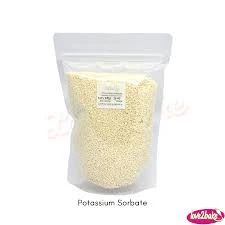
Choosing the Best Thickening Agents for Your Food Recipes and Cooking Techniques
The Role of Thickening Agents in Food Preparation
Thickening agents are substances that increase the viscosity of a liquid without altering its other properties. In culinary applications, these agents play a crucial role in transforming the texture and mouthfeel of various dishes, from sauces and soups to gravies and desserts. Understanding the different types of thickening agents and their applications can enhance gastronomic creations, making them more enjoyable and appealing to the palate.
Thickening agents can be broadly categorized into natural and synthetic varieties. Natural thickening agents include ingredients derived from plants and animals, such as starches, gums, and proteins. Common examples of natural thickeners are cornstarch, arrowroot, gelatin, and pectin. Each of these agents operates differently and is suited for specific applications.
The Role of Thickening Agents in Food Preparation
Arrowroot is another popular thickener, favored for its neutral flavor and high clarity. It’s derived from the tropical arrowroot plant and works similarly to cornstarch but is often preferred for delicate sauces and gluten-free recipes. Arrowroot thickens at lower temperatures, making it ideal for incorporating into sauces shortly before serving, as prolonged cooking can break down its thickening properties.
thickening agent for food

Gelatin, a protein derived from collagen, functions as an excellent thickening agent for desserts like puddings, mousses, and jellies. When dissolved in warm liquid and then cooled, gelatin sets to form a gel-like consistency. While it’s an effective thickener, it is not suitable for vegetarian or vegan diets unless plant-based alternatives, such as agar-agar, are used. Agar-agar, derived from seaweed, sets more firmly than gelatin and is a preferred thickener in vegetarian cooking.
Pectin is another natural thickening agent derived from fruits, commonly used in making jams and jellies. When combined with sugar and acid, pectin forms a gel, trapping the liquid to create the desired texture. The degree of gelling can vary depending on the type of pectin used, making it essential for food technologists and home cooks to choose the right one for their specific recipes.
In contrast, synthetic thickening agents such as sodium alginate and xanthan gum are increasingly common in modern cuisine. Sodium alginate, derived from brown seaweed, is utilized in the food industry for its ability to create stable gels and foams. It’s especially popular in molecular gastronomy, allowing chefs to innovate with textures and presentations.
Xanthan gum is produced by fermenting sugar with the bacterium Xanthomonas campestris. It is a powerful thickener and emulsifier, often used in gluten-free cooking. Xanthan gum can be added directly to dry ingredients or mixed with oil before incorporating into liquids. Its unique ability to maintain thickness even when heated or frozen makes it a versatile choice for sauces, dressings, and various food products.
In conclusion, thickening agents are invaluable in culinary arts, providing the desired viscosity and enhancing the overall dining experience. The choice of thickening agent can significantly impact the flavor, texture, and presentation of dishes. By understanding the characteristics and applications of natural and synthetic thickeners, chefs and home cooks alike can employ these ingredients effectively, elevating their dishes and delighting diners. Whether it’s a rich gravy, a smooth soup, or a luscious dessert, thickening agents are essential tools in any kitchen.
-
Buy High-Quality Trichloroisocyanuric Acid for Sale | TCCA 90% SupplierNewsAug.30,2025
-
Pure Sodium Dichloroisocyanurate Dihydrate | Powerful DisinfectantNewsAug.29,2025
-
Industrial Chemicals: Quality & Purity for Every IndustryNewsAug.28,2025
-
Nitrile Rubber Honoring Strict Production StandardsNewsAug.22,2025
-
Aspartame Ingredients Honoring Food Safety ValuesNewsAug.22,2025
-
Fertilizer for Balanced Plant NutritionNewsAug.22,2025
-
Cyanide Gold Processing with High Purity AdditivesNewsAug.22,2025
Hebei Tenger Chemical Technology Co., Ltd. focuses on the chemical industry and is committed to the export service of chemical raw materials.
-

view more DiethanolisopropanolamineIn the ever-growing field of chemical solutions, diethanolisopropanolamine (DEIPA) stands out as a versatile and important compound. Due to its unique chemical structure and properties, DEIPA is of interest to various industries including construction, personal care, and agriculture. -

view more TriisopropanolamineTriisopropanolamine (TIPA) alkanol amine substance, is a kind of alcohol amine compound with amino and alcohol hydroxyl, and because of its molecules contains both amino and hydroxyl. -

view more Tetramethyl Thiuram DisulfideTetramethyl thiuram disulfide, also known as TMTD, is a white to light-yellow powder with a distinct sulfur-like odor. It is soluble in organic solvents such as benzene, acetone, and ethyl acetate, making it highly versatile for use in different formulations. TMTD is known for its excellent vulcanization acceleration properties, which makes it a key ingredient in the production of rubber products. Additionally, it acts as an effective fungicide and bactericide, making it valuable in agricultural applications. Its high purity and stability ensure consistent performance, making it a preferred choice for manufacturers across various industries.





